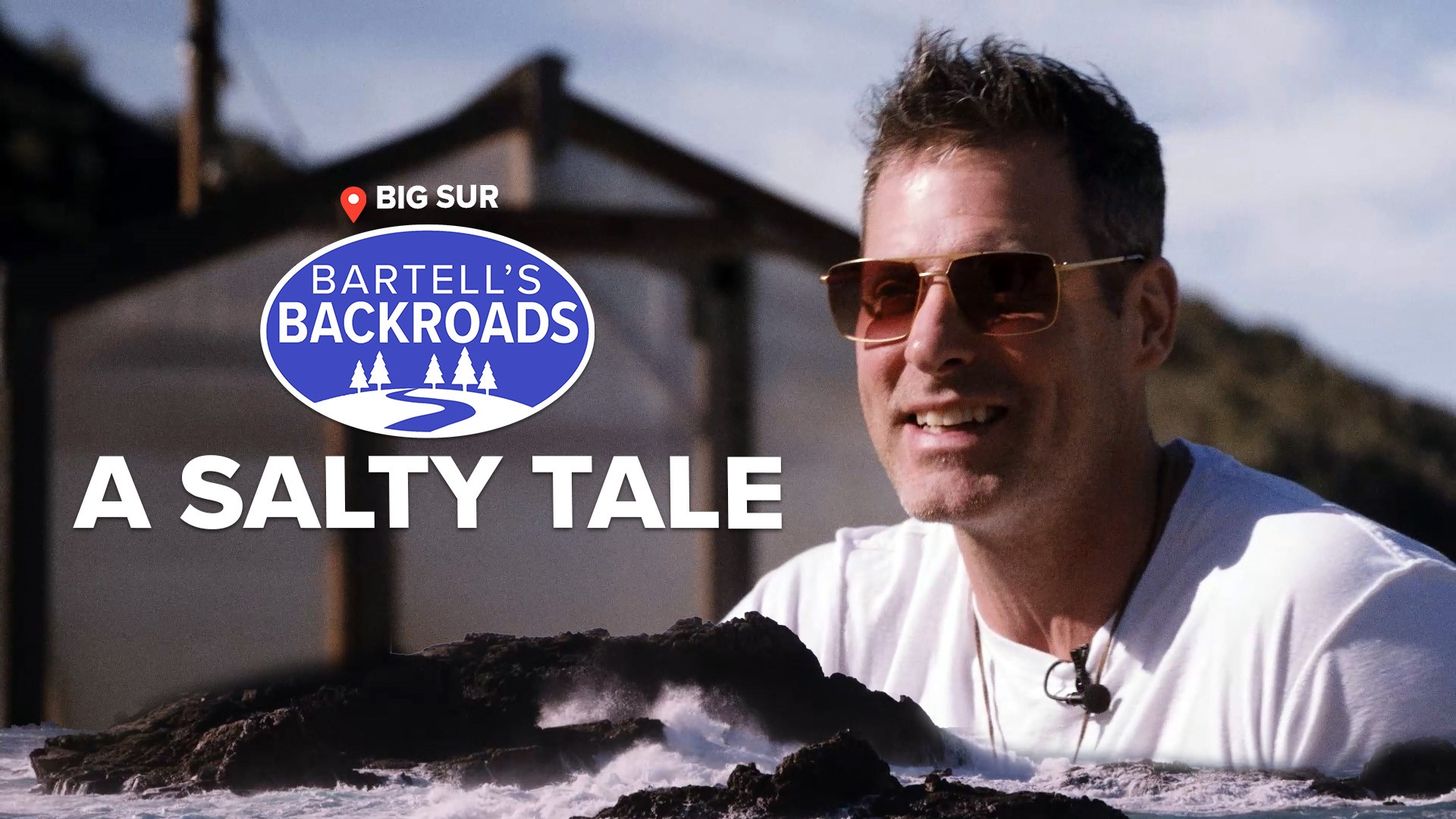BIG SUR, Calif. — Big Sur is often a place where people come to look for inspiration or maybe direction.
"Continue working in Los Angeles’ music industry or start fresh?" was the question Carlo Overhulser asked himself a few years ago on a rocky Big Sur cliffside.
“I guess I was asking nature should I move to LA or is there a way I can stay here because it’s amazing,” said Overhulser. “This big wave comes barreling over top of me and hits me — just nails me.”
Overhulser didn’t know it then but Big Sur gave him an answer.
“I collected some water in a bottle because I collect stuff like that. Shells, rocks, you know,” he said.
His new life direction showed up a few months later after the water in the bottle evaporated.
“I was like 'what is in the bottle?' So, I dumped it in my hand and for some odd reason I tasted it and was like, 'that was the best salt I ever tasted,'” said Overhulser.
The ocean has a salt concentration of about 3.5% and the concentration is what pushed him to give up his old job and become a salt harvester.
“Salt just forms naturally on the rocks out here,” he said.
Long before dream seekers like Overhulser were asking the ocean for answers, Native American tribes collected salt from the Big Sur cliffsides.
As waves crash on the rocks, ocean water pools up in little puddles. Just like in Overhulser’s water bottle, salt forms over time.
“It forms at the bottom of the pools and at first it’s very briny,” said Overhulser.
The salt in ocean water doesn’t just settle to the bottom of this pool. It goes through a long evaporation process.
TAKE A TRIP ON BARTELL'S BACKROADS:
► See an interactive map of everywhere John has visited on the backroads
► Watch all of the Backroads videos
► Follow John on Facebook
Overhulser found himself looking for a practical way to harvest salt. He started pulling buckets of water from the ocean and farming the sea salt in greenhouses.
“The greenhouse is the same exact thing as on the rocks except it is a controlled environment. You don’t have algae or anything to deal with. This is just straight evaporation,” he said.
Not only does the greenhouse speed up the evaporation and filtration process, but it also allows him to make artisan salt by mixing in different clays and minerals in the water.
"You will have this brownish, grayish salt and that is Sel Gris which is normally found in France. This is what they do,” said Overhulser.
Big Sur Salts is what Overhulser calls his company and today you will find his 15 different artisanal salts in more than 140 stores and restaurants.
“Originally, I thought maybe the chefs would like it and put it on their menu. Now it’s grown into this big thing and I feel blessed,” he said.
Big Sur helped him find a new life direction, so every chance he gets he shares his good fortune by giving tours of the of the salty sea cliffs.
“It reminds me how small I am. It’s very powerful and inspires me,” said Overhulser.
MORE SALTY GOODNESS ON THE BACKROADS: Usually visible only from planes, trains, and bridges, this local operation provides everything from sea salt to road salt.



















